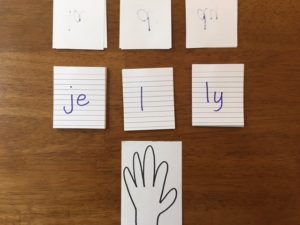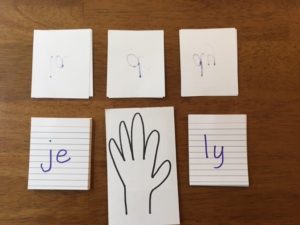Multisensory Monday: A “Hands On” Spelling Activity with Consonant-Y
Posted by Tammi Brandon on 21st Jan 2018
One of the more challenging concepts for students to master is using the correct spelling for Consonant-Y words. They often have difficulty knowing if a word should have a single consonant between the initial vowel and the Y, as we find in words such as baby, tiny, and pony, or a double consonant between them, as in mommy, puppy, and happy.
Although the rule may seem simple to some, many students struggle with understanding and consistently applying the rule.
The Consonant-Y Spelling Rule:
If the first syllable has an open (long) vowel sound, use a single consonant between the vowel and the Y.
If the first syllable has a closed (short) vowel sound, two consonants must be used between the vowel and the Y.
Multisensory Activity:
To help students master this rule, a hands-on multisensory activity is crucial. Using just index cards and a marker, you can create a simple, fun and effective teaching tool.
Here’s how:
- On a stack of index cards, write some word beginnings such as la, pu, mo, gru, etc.
- On another set of index cards, write some single consonants such as d, p, m, b, etc.
- On a third set of index cards, write some consonant-y endings such as dy, py, my, by, etc.
- Draw a hand on a single index card.
- Arrange the cards into three piles: word beginnings, single consonants, and consonant-y. You may wish to pre-arrange the word cards so that only real words appear. For more advanced students, pseudowords may also be used.
- Give the student the card with the hand drawn on it and instruct him to use it to cover the single consonant card as needed.
- Say the word on the cards to the student, and ask the student if that word needs the extra consonant card or not. If the word does not need the extra consonant, the student should use the hand card to cover the consonant card. You may wish to have the student read each word with and without the extra consonant card.
- Flip each card and create a new word for the student.
When this word appears, the teacher says, “Show me how to spell the word lady.”
Because the first syllable contains an open (long) vowel sound, the student should cover the index card with the d.
When the teacher asks for the word jelly, the student should not cover the single consonant card. 
If the student does cover the single consonant card, encourage him to read the word. The word, when spelled this way, is read jee-lee.
Advanced Multisensory Activity Using Pseudowords:
Once the student is consistently identifying the correct spelling of real words with consonant-Y, you may wish to include pseudowords. Students may either read the pseudowords both ways, or the teacher may continue to ask the student to show a specific word.
You might ask, “how do you pronounce this pseudoword? It has an open first syllable and rhymes with Toby.”
“How do you pronounce this word with the extra consonant in it? It has a closed first syllable, and rhymes with Bobby.”
In Conclusion…
Students of all ages seem to enjoy this activity, and it really helps them in deciding how to spell words with consonant-Y. You could easily modify this activity and use it with consonant-le endings to help students decide if words like puddle should be spelled with a single or double d.
Tammi Brandon, M.Ed., CDP
Tammi Brandon is a Master Instructor and Education Consultant with Brainspring Educator Academy.
Bring Brainspring Orton-Gillingham multisensory instruction to your classrooms, transforming struggling K-12 readers into skilled learners through our effective, evidenced -based approach.
For more information please visit brainspring.com or call 1-8007323211



